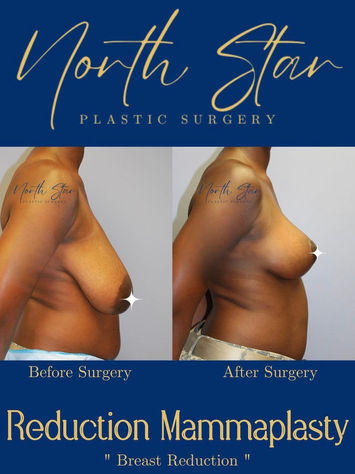Breast Reduction Plastic Surgery
At North Star Plastic Surgery in Fairbanks, AK, patients seeking relief from the physical and emotional burdens of large breasts find solace through breast reduction, expertly performed by Dr. Erick Martell. Known as reduction mammoplasty, this procedure aims to alleviate discomfort by reducing breast size and reshaping the breasts.
Whether prompted by medical concerns such as back pain, neck pain, skin irritation, or breathing difficulties, or driven by cosmetic desires for improved proportions and aesthetics, breast reduction offers transformative outcomes. Dr. Erick Martell evaluates each patient's unique anatomy and concerns to tailor a surgical approach that addresses their specific needs.
The surgical technique employed varies based on factors such as breast size, shape, and degree of sagging. Incisions may be made around the areola, vertically down to the breast crease, and horizontally along the breast crease. Through meticulous removal of excess breast tissue, fat, and skin, and strategic repositioning of the nipples and areolas, a more balanced and youthful breast contour is achieved.
As with any surgical procedure, breast reduction carries potential risks and complications, including but not limited to bleeding, infection, scarring, and changes in nipple or breast sensation. Dr. Martell ensures thorough discussions with patients at North Star Plastic Surgery, empowering them to make informed decisions about their treatment journey while prioritizing their safety and satisfaction.

Before & Afters





